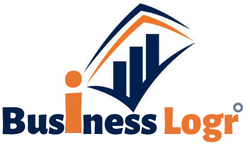
Any improvement of lasting significance in HUL’s performance looks possible only in FY17. The second half of FY16 may give hints of how that may or may not happen. Pradeep Gaur/Mint
The disappointment in Hindustan Unilever Ltd’s (HUL’s) results is not in its volume growth. That rose by 7% and if you adjust for a sales push in end-September—anticipating a truckers’ strike in October—then it was 6.5%. Still, that’s a bit better than the June quarter’s 6% growth. Consumer sentiment has been dull, economic conditions are iffy, and in that context, the sales growth looks alright.
Value sales grew by only 4.7%, lower than the 5.3% growth seen in the June quarter. Some of this is due to the phasing out of excise duty benefits. But that was visible in the June quarter too. Low growth partly reflects further cost cuts being passed on to customers. HUL has cut prices further in the soaps and detergents’ categories as palm oil-related inputs have become cheaper. Crude-related packaging costs have become cheaper too. But competition is also a spoilsport, as prices of some shampoos have been cut to match peers’ actions.
ALSO READ
Hindustan Unilever’s Q2 profit falls 2.6% to Rs962 crore
Its main segment soaps and detergents, which contributed 48% of sales, saw a meagre 1.6% increase in sales growth and higher advertising spends led to lower profits. What’s more worrying is that sales of personal products, which contributed 30% of sales and is HUL’s main profit driver, slowed down relative to the June quarter. Falling input prices are imposing a cost on growth.
At the overall level, HUL’s advertising and promotion expenditure rose by 23.8%, but in absolute terms was similar to the June quarter’s level. The company management said they are using the low raw material price situation to spend behind brands and market development. Since unit costs are lower, consumers may be willing to upgrade to higher margin premium brands. Once commodity prices rise, even if only some of these converts stay put, it could make a significant difference to profits.
But that is in the future. In the September quarter, its operating profit margin widened by a mere 40 basis points to 16.7%, but narrowed sequentially by 1.9 percentage points. Maintaining volume growth is coming at a cost. Price cuts, higher advertising and other expenses are offsetting the decline in material costs. One basis points is 0.01%.

In a way, this is partly a timing issue. Volume growth is steady and progressing. But falling prices—at the overall level—are causing low value sales growth. Advertising spends are at the same level as the June quarter, but are higher over a year ago (14.6% of sales versus 12.4% a year ago). That is eroding the savings in material costs.
This difference will narrow from the March quarter onwards as the absolute spends will level. Also, the excise-related effects will also taper around that time. That should give more space for margins to expand.
But the underlying problem is weak demand growth. It needs a solid kick from advertising and promotion spends to grow. That is unlikely to change soon. If competition in its personal products category expands, that could be bad news. Any improvement of lasting significance in HUL’s performance looks possible only in FY17. The second half of FY16 may give hints of how that may or may not happen.
[“source -livemint”]




